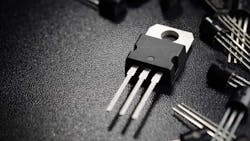How Linear Regulators, Voltage Supervisors, and LDOs Deliver Low Iq (Download)
In my article “What is the Essence of Quiescent Current?,” I define quiescent as “a state or period of inactivity or dormancy.” In an electronic system, quiescent current is what flows through these systems while in standby mode with no load present or with a light load.
Quiescent current is generally defined as the current flowing from the GND terminal. Most datasheets will have a quiescent-current (Iq) value, when at a zero current load conditions, that’s at a specified input voltage (VIN), bias voltage (VBIAS), and temperature.
This article will delve into low Iq features for three key component groups in electronic design: linear regulators, low-dropout (LDO) regulators, and voltage supervisors.
